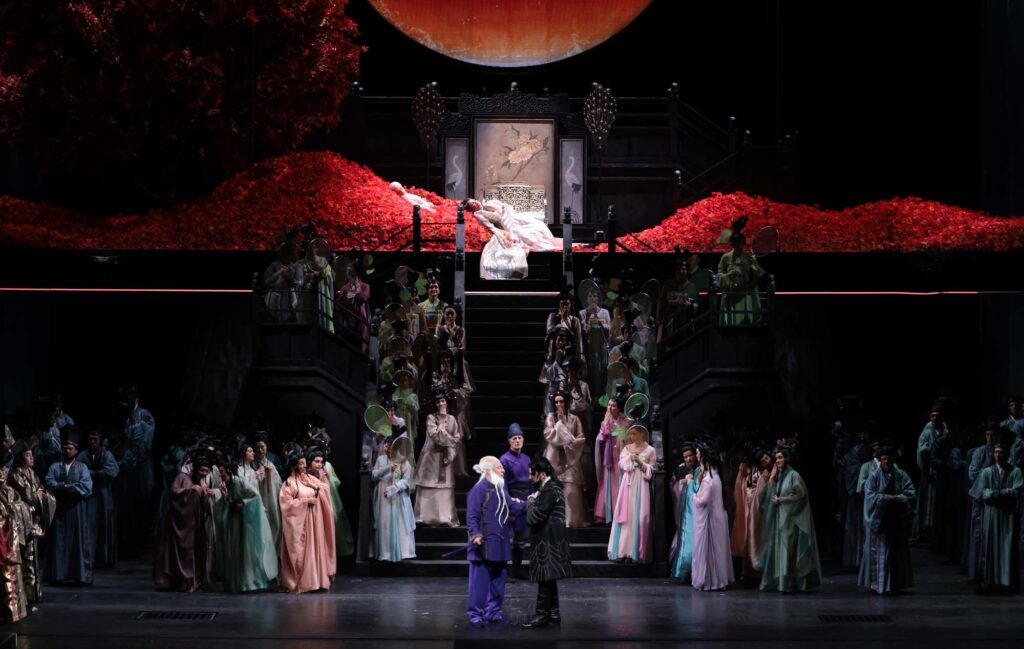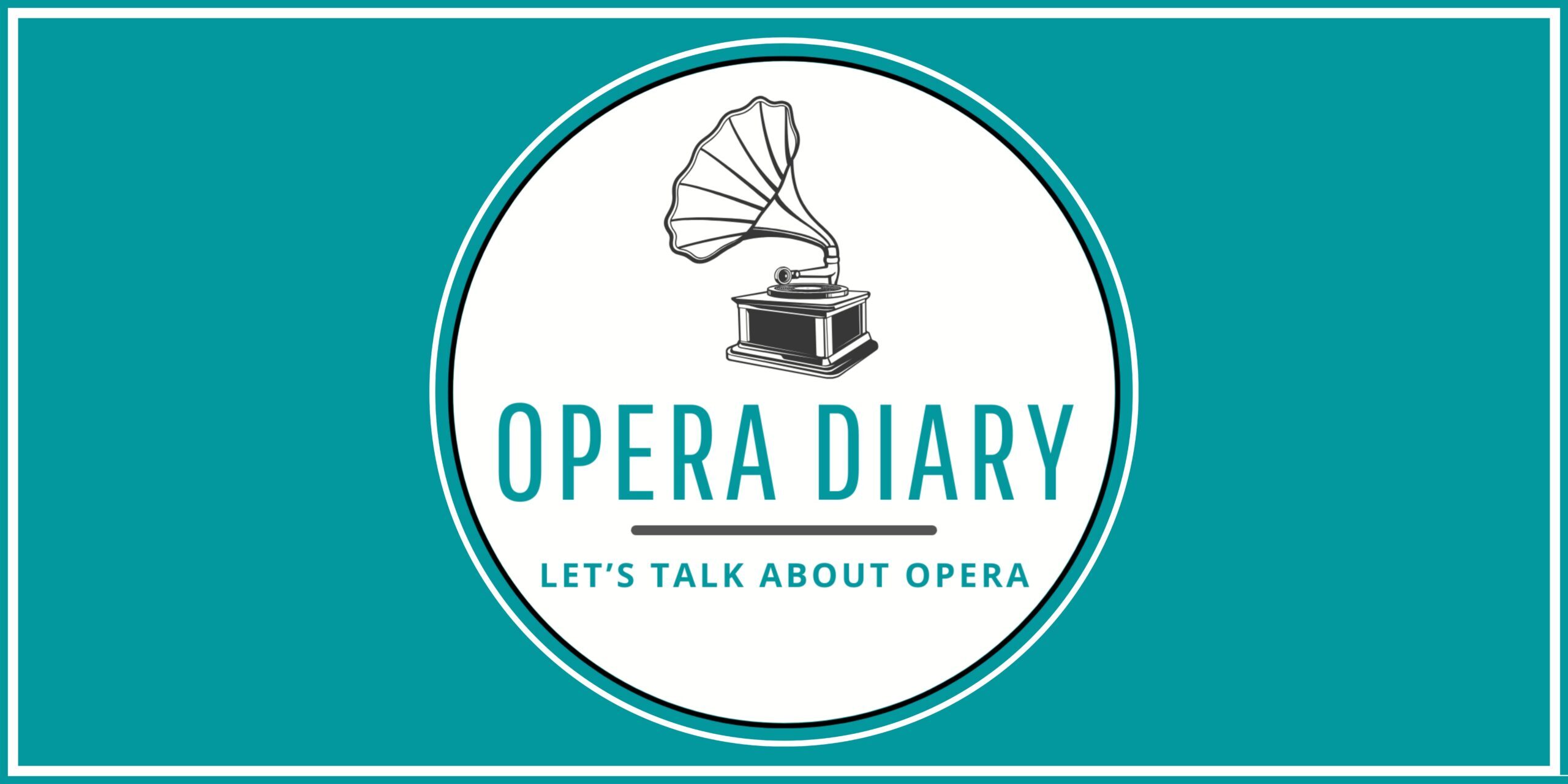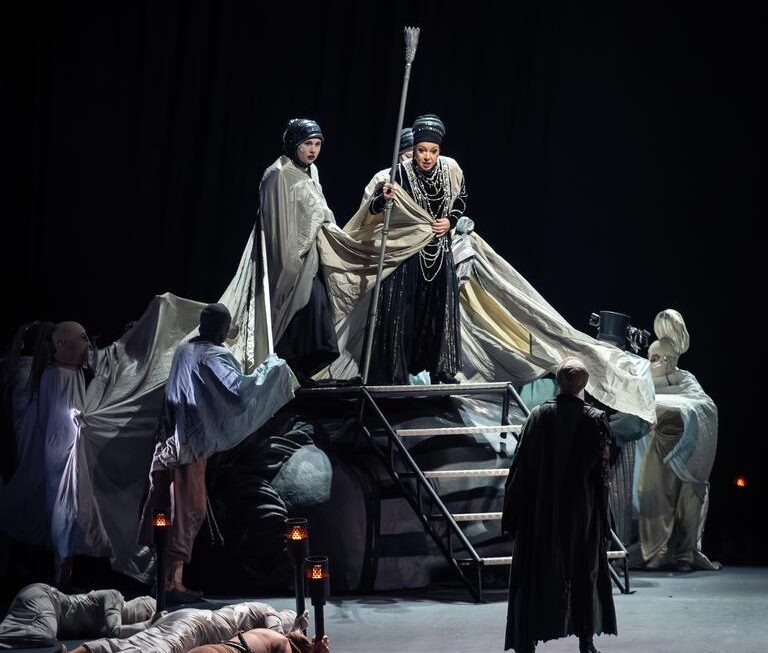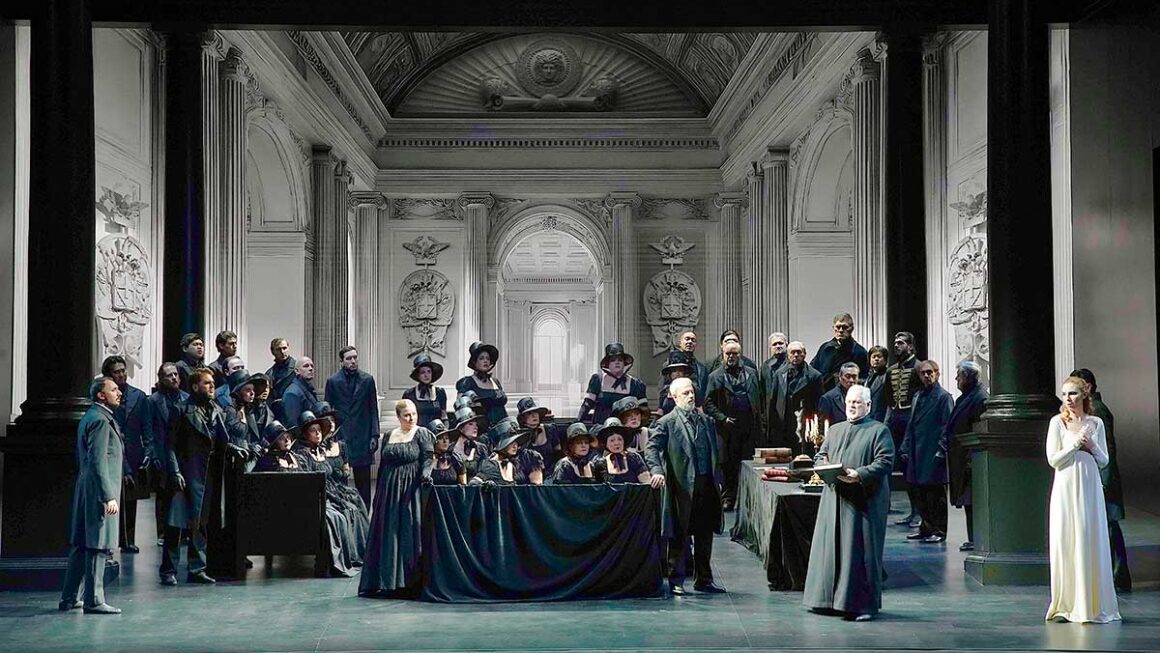After a not too successful “Rondine“, on the centenary of the death of Giacomo Puccini, La Scala theater stages the last work of the composer, Turandot, opera remained unfinished due to the death of the musician, who avid smoker, was suffering from a throat cancer. On the evening of 25 April 1926, Toscanini conducted the first performance at La Scala in Milan, interrupting the opera halfway through the third act, after the death of the slave Liù, when he put down his baton and addressed the audience with the words «qui termina la rappresentazione, perché a questo punto il Maestro è morto» , namely «here ends the representation, because at this point the Maestro is dead.”
After the withdraw of the expected conductor Daniel Harding, on paternity leave, the greatest
interest of the new La Scala production became the presence as protagonist of the Russian
naturalized Austrian diva Anna Netrebko, to the delight of the box office for 7 performances sold- out in less than 5 minutes . The Diva not only did not disappoint expectations but reconfirmed to the spectators, arrived from all over Europe, that she is the best singer currently active and that she has no intention of giving up the scepter.

The baton was taken over by the young Michele Gamba, who two years ago, in the same theater,
had performed a memorable Rigoletto, while the direction was entrusted to Davide Livermore, a
long attendance in Milan included four season openings. Also very obvious the choice to use the
finale composed by the musician Franco Alfano, making use of Puccini’s notes and unfinished
sketches, an ending which was modified and cut by Toscanini who considered it too long. Which
ending, and whether an ending is really needed, is a highly debated question among musicians and musicologists, wondering for a century about Puccini’s enigmatic note “e poi Tristano”, imagining perhaps an ending of love and death.
Michele Gamba’s musical conduction was very interesting, as he renounced seeking decadent and art nouveau suggestions in the score and avoided exasperating the exoticism of the Chinese themes and pentatonic scales; “Pekino ai tempi delle favole” becomes a barbaric, violent, disturbing China, with the Orchestra and the Choir pushed to sharp, incisive, almost expressionistic sounds which sometimes tended to overwhelm the sounds and the voices of the phenomenal Coro della Scala.
Coming to the Direction, and therefore to the querelle between traditional and modern staging, it
should be noted that in the space of a few months the Italian public has been able to enjoy
numerous and very disparate stagings of Turandot: from the visionary and fantasy one by Vasily
Barkhatov at the San Carlo of Naples, to the hyper-traditional by Zeffirelli at the Verona Arena, to
the one hundred percent Chinese red lanterns by Zhang Yimou at Maggio Musicale Fiorentino.
Livermore, despite the modern setting, chooses as usual to create a direction that is more
descriptive than interpretive with the aid of video projections and the inevitable suspended
walkway. The first act was very successful, set in a modern Blade Runner-style Beijing, which was by the way very reminiscent of Damiamo Micheletto’s Nagasaki, in which a restless crowd moves, ready to lynch the prince of Persia, until the appearance of a large moon which rotates, changes color and dominates the stage for the entire duration of the opera. There were many ideas, not always successful, such as that of double Turandot with the character of her ancestor Lou Ling, raped by the king of the Tartars. It seemed very kitschy the interruption of the opera after Liù’s death, the appearance on the stage of the composer’s image with the writing “qui è morto Puccini”, while the artists and the public in the theatre lit the small candles that the staff had distributed during the interval.

The singing company deployed was more than excellent; Anna Netrebko’s Turandot is sensational, finally performing indoors the role she had sung in two productions at the Arena di Verona. It is not a secret that the soprano loves this role very much, allowing her to show off all the registers of her extraordinary voice, from full low to very bright high notes, never shouted and often bent to impalpable pianissimi that filled the enormous Piermarini hall. The stage presence and dominance of the role is absolute, the transformation from “principessa di gelo” to woman in love is formidable and engaging. Spectators were excited and aware that they were listening to a singer of historic stature, who has just celebrated thirty years of career, moving from light soprano roles such as Susanna and Norina, to dramatic ones such as Gioconda and Turandot, always becoming a reference interpreter. “Diecimila anni alla nostra Anna”.
Excellent as usual is the Calaf of Yusif Eyvazov, a singer of great intelligence and strong technique, very confident in the high notes, who boldly performed the high variant “ti voglio tutta ardente d’amore” and holded his own against his ex-wife in the unison C that precedes the riddle scene.
Rosa Feola, who was an exceptional Liù at the inauguration of the San Carlo in Naples, shows off a voice with a beautiful timbre and a great technique of belcanto school; unfortunately the choices of the conductor penalized the delicate character of Liù and the soprano’s interpretation suffered as a result.
Vitalij Kowaljow’s Timur is good and the three Ping Pang Pong masks played by three true oriental singers, Sung-Hwan Damien Park, Chuan Wang, Jinxu Xiahou, were excellent despite the pronuntiation was not always perfect. Notable the presence of one of the greatest Rossini tenor of the past years, Raúl Giménez as Emperor Altoum.
The elegant and international audience that fulfilled the theater decreed the triumph of the
performance; as soon as the lights were turned off, a crowd gathered at the artists exit waiting for the Diva, who generously gave herself.






Thank you for Sharing These Wonderful performences